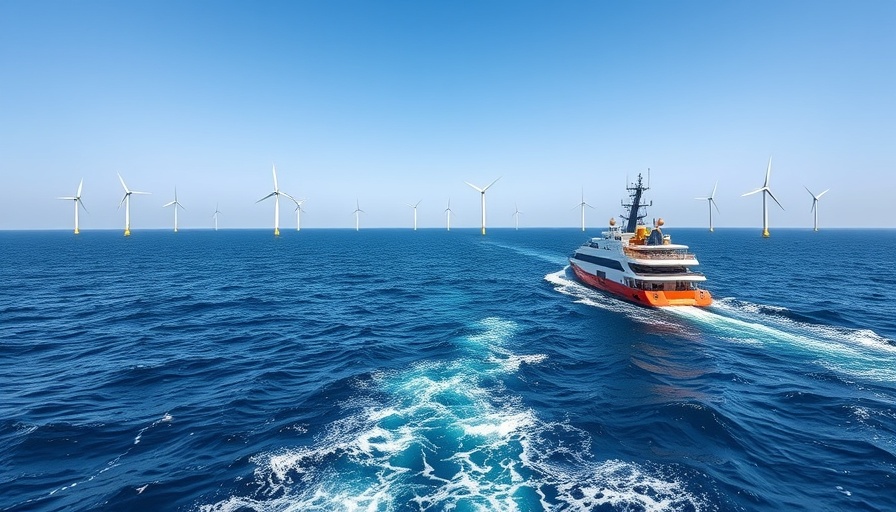
The Growing Demand for Sustainable Maritime Solutions
The maritime industry is at a pivotal junction, where the demand for sustainable practices is colliding with its historical dependence on carbon-intensive operations. As global trade increases—12 billion tons of cargo was transported via sea in 2023, a remarkable leap from the 1995 figures—there is an urgent need for strategies that reconcile growth with environmental responsibility. This growing demand reflects not only economic realities but also a strong call from stakeholders for a commitment to reduce the industry's carbon footprint.
Navigating Challenges: Geopolitical and Regulatory Pressures
However, the maritime industry is simultaneously grappling with significant external challenges. Geopolitical volatility increasingly disrupts operations, while a maze of regulations adds to operational complexities. The introduction of the IMO’s Net Zero Framework set to launch in October brings mandatory marine fuel standards and GHG emissions pricing to the forefront. These regulations are predicted to escalate compliance costs dramatically—$6 billion in 2025, spiraling to potentially $51 billion by 2030. The burden is further compounded by recent reports indicating that less than 40% of shipping companies managed to meet stringent emissions reporting deadlines under the EU Emissions Trading System (ETS).
Financial Transformation as a Key to Sustainable Growth
To achieve the ambitious goal of net-zero greenhouse gas (GHG) emissions by 2050, the operational model of the maritime sector needs an overhaul. This involves not just regulatory compliance but also a financial transformation where green financing is prioritized. The maritime sector needs financial institutions to realign capital to support climate performance. Innovative financing models are critical—solutions that marry sustainable investments with risk management, and foster development initiatives embracing sustainability.
Creating Green Corridors: A Collaborative Path Forward
A promising approach to overcoming the alternative fuels dilemma is through the establishment of green corridors. The collaboration between Bureau Veritas and partners like Fortescue and K Line is a case in point, focusing on specific trade routes like the Australia-Japan iron ore corridor that will utilize green ammonia for fuel. Collaborative efforts like these will synchronize the development of ships, ports, and fuels to enable profitable zero-emission trade.
Operational Innovations: The Blue Visby Solution
Operational efficiency is critical in finally aligning the maritime sector with its decarbonization goals. The Blue Visby Solution is an innovative approach that addresses age-old inefficiencies in maritime operations through advanced technology. By employing algorithms to optimize arrival times, it allows vessels to reduce speeds and minimize emissions—potentially cutting CO2 emissions by around 45 million tonnes across tanker and bulk fleet operations.
Conclusion: A Call for Action and Collaboration
As we contemplate the future of a sustainable blue economy, the maritime industry's path is fraught with both challenges and opportunities. Every stakeholder, from shipowners to financial institutions, must proactively engage in transforming practices towards sustainability. Real change requires collaborative initiatives focused on innovative thinking and a resolute commitment to environmental stewardship. By embracing these transformative steps, we can secure not only the health of our oceans but also the long-term viability of the maritime industry itself.
 Add Row
Add Row  Add
Add 




Write A Comment